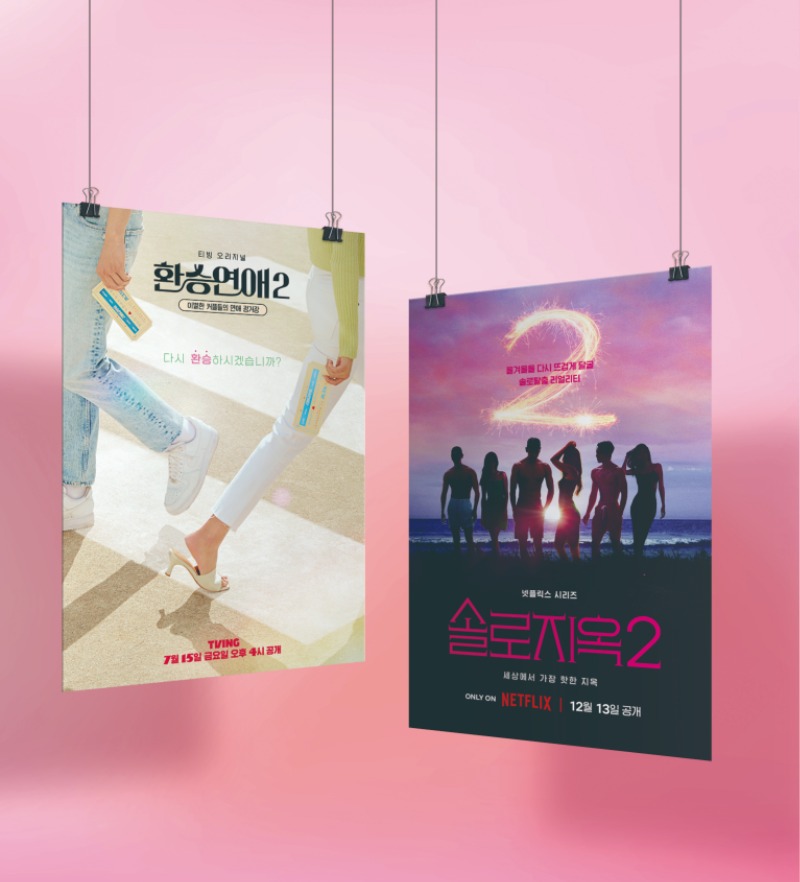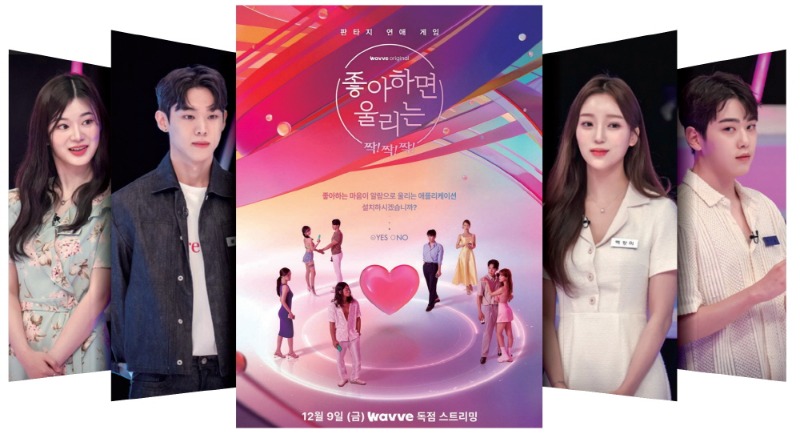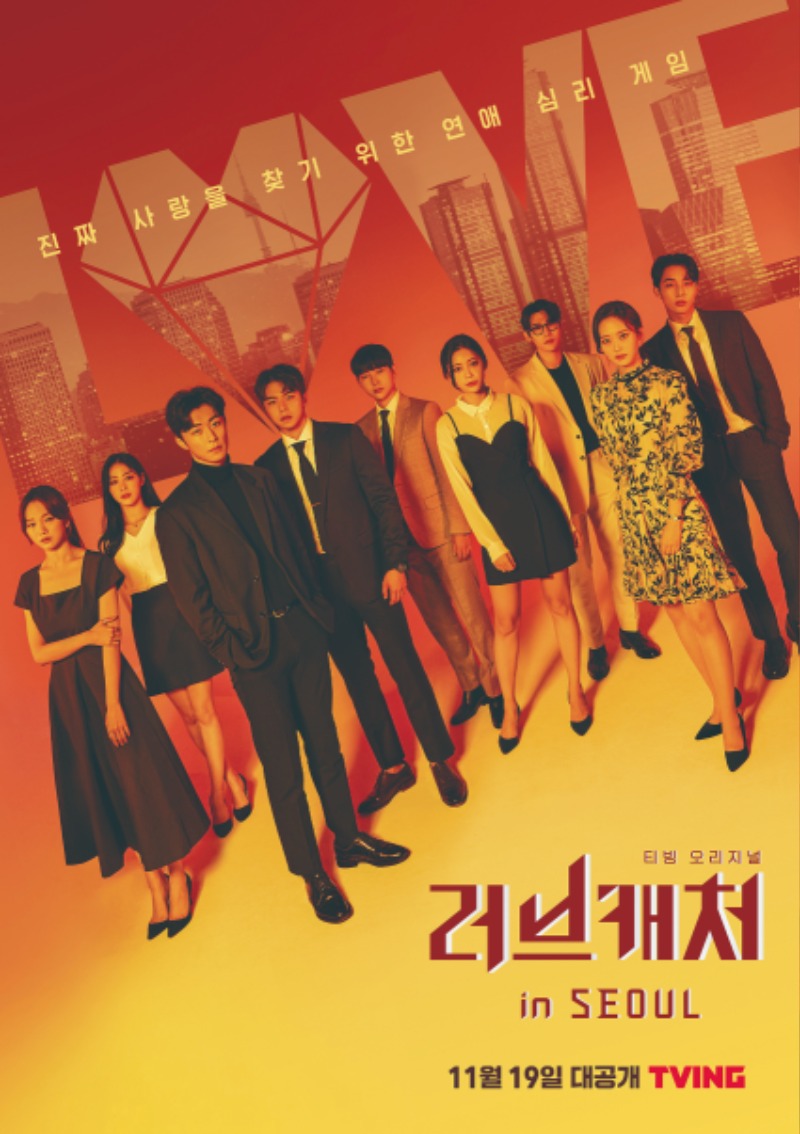For streaming platforms, the latest trend in Korean content is reality dating shows. This form of entertainment bridges the gulf between ideal relationships and the real-life dating scene in Korea.

Posters for the second season of reality dating TV shows. “Transit Love 2” (left) puts ex-couples in a house where they meet new people. “Single’s Inferno 2” puts contestants on an island. They can only leave by pairing up.
ⓒ TVING / ⓒ Netflix
There is no denying that reality dating shows are currently the go-to genre among streaming platforms in Korea. The huge success of “Transit Love” and “Single’s Inferno” in 2021 was followed by a wave of similar programs. As long as their shows are clearly marked with age restrictions, streaming services can avoid the type of censorship encountered by broadcasting companies, which has allowed them to push the boundaries.
Korean reality dating shows of the past gave off the same kind of vibes as romantic K-dramas. After a typical boy-meets-girl scene, a couple’s relationship would develop without any rawness, emotionally or physically. “Transit Love” and “Single’s Inferno” changed the formula and quickly got viewers hooked, opening an entirely new side of the dating entertainment genre in Korea.
TWO CATALYSTS

“Love Alarm Clap! Clap! Clap!” is the live action dating show version of a webtoon series in which an alarm is triggered when a love interest is detected within 10 meters.
© Wavve
The first season of “Transit Love” ran from mid-summer to early fall in 2021. It gathered five former couples to live in close quarters for a while. They could either meet someone new and make the “transit” to a new relationship, or return to being unattached. The interaction between exes and their reactions when they saw each other spark an interest in someone new kept viewers glued to every episode. Mainstream media would not have dared to make a program showing such raw emotions.
“Single’s Inferno,” streamed on Netflix, created a buzz among both Korean and global audiences. It compared to “Too Hot to Handle,” an American-British TV game show in which the contestants live together for weeks and connect, but are forbidden from kissing, sexual contact, or self-gratification. The prize money is reduced whenever the rules against intimacy are broken.
In “Single’s Inferno,” a group of singles are left on a deserted island to find love. The show does not discourage physical relations; the contestants are bold in terms of public display of affection and attire, or the lack thereof. Matched couples get to leave the island and spend the night in “Paradise.” The risqué program showed intense emotions and physical intimacy between the cast members.
“Transit Love” and “Single’s Inferno” have had a huge influence on Korean dating shows. They returned with new casts in 2022 and were joined by a host of other programs: “Love Catcher in Bali” on TVING; “I’m Solo,” “Love After Divorce 3” on MBN; “His Man,” and “Merry Queer,” and “Love Alarm Clap! Clap! Clap!” on Wavve, to name a few. They are provocative on all counts — theme, sensuality, and intensity — with diverse contestants, including divorcees, couples on the verge of breaking up, and members of sexual minorities.
“LOVE STUDIO,” THE STARTING LINE
Korean TV ventured into reality romance shows decades ago. “Love Studio” aired on MBC from 1994 to 2001. Non-celebrities were invited to a broadcast studio to talk, play games, and choose who they wanted to be with at the end. With its simple format, it was popular enough, but viewers wanted more entertainment, so celebrities were cast instead. They displayed their charms, played games, and matched up. This marked the turning point for dating programs in the late 1990s.
At the time, foreign reality shows featured ordinary people who were alarmingly candid in exposing their private lives. But Korean airwaves could not keep up with the trend due to stricter regulations. Nonetheless, the public was thirsty for dating programs. Korean TV met their needs halfway, toning down the features of foreign reality shows. “We Got Married,” aired on MBC from 2008 to 2017, epitomized the milder approach by showing celebrity couples in virtual marriages.
By then, the age of reality shows was dawning in broadcasting. They arrived under the less provocative deion of “observation camera,” and in 2011, the Korean-style reality dating show “Partner” premiered on SBS. The format had non-celebrities spend time together in “Love Village” and choosing a partner. It was the prototype of the Korean reality dating shows that are now in vogue. The genre temporarily lost steam when it was criticized for excessive exposure of contestants’ private lives. Later, in 2017, “Heart Signal” introduced real romance in the shape of a melodrama. A few years later, non-celebrity reality shows, the diverse approaches of directors, and the advent of on-demand streaming services paved the way for “Transit Love” and “Single’s Inferno.”
OBSTACLES TO ROMANCE

Truths and lies coexist on “Love Catcher.” To win prize money, the love catcher must dodge the money catcher to find true love, and the money catcher must seduce the love catcher.
© TVING
The popularity of dating shows would suggest that young Korean adults are deeply interested in romance and marriage. But reality tells a slightly different story. Due to dire economic conditions, many singles find dating hard and are likely turning to TV shows for vicarious satisfaction.
The number of couples getting married is declining. The drop began even before COVID-19 curbed weddings. Data from Statistics Korea show that 192,507 couples got married in 2021, a 41.6 percent decrease from ten years prior, when 329,087 couples got married.
Many young Korean adults are simply giving up on dating, getting married, and having children. Each stage in life requires a certain budget, and they face tough odds. High youth unemployment is chronic, and even a decent job does not guarantee a comfortable home in the persistently expensive housing market. Dating is barely affordable, much less marriage. The dating show frenzy reflects the vicarious satisfaction of people who find it difficult to be in a relationship.
The new reality dating shows of 2022 provide a glimpse of general attitudes toward dating. Young Koreans are much more open about relationships than the older generation, for example, in the way they express their love, stay in contact even after they break up, display affection in public, or live together before getting married. A growing number also respect diversity, accepting love regardless of people’s sexual orientation.
From the perspective of Korean content overall, romance has always been at the core. Not only the recent boom in dating reality shows but also the romantic comedy dramas that are popular abroad are evidence of that. For cultural and emotional reasons, Korea’s dating shows are more restricted compared to their foreign counterparts, which had a head start. However, they are expected to quickly catch up to the fame enjoyed by rom-coms, as Koreans have a knack for delicately capturing emotions that results in shows with a unique sensibility.
Jung Duk-hyunPopular Culture Critic